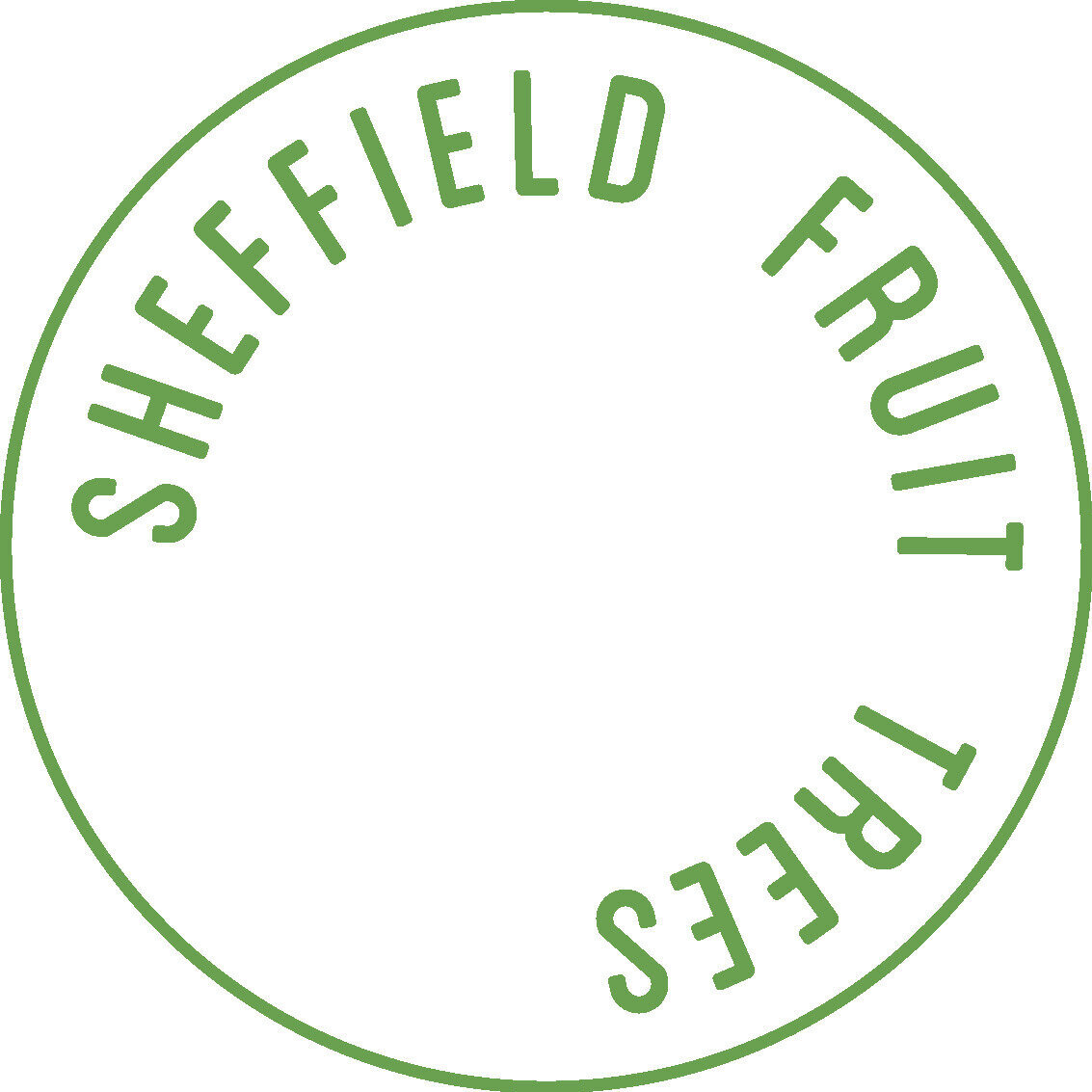an apple a day
Why plant fruit trees?
These days we’re all aware that the pressures of climate change, biodiversity loss and air pollution mean we need to be planting more trees and getting our food from closer to home.
Fruit trees are a great response to these challenges and have the added bonus of making our communities more beautiful places to be in, leaving a natural legacy for future generations.
Our project was founded with the goal of increasing the abundance of local fruit, and we won’t be satisfied until there are fruit trees growing in every garden, allotment and roadside in Sheffield!
Choosing your fruit trees
There are a few things to consider when choosing your fruit trees. If you have any questions that aren’t answered by the information below then don’t hesitate to get in touch. We love a good fruit tree chat.
Grafting
We produce all of our fruit trees by grafting. This is where living wood taken from a mature fruit tree is joined onto a rootstock (see below). There are various reasons for doing this, the main one being that if you plant a pip from an apple the resulting tree won't produce the same fruit! So we graft in order to grow trees that will give the varieties of fruit that we want.
Rootstocks
The rootstock is the lower section of the plant and the type you choose will have an effect on the eventual size of the tree, disease and pest resistance and how soon it will bear fruit. There are many different types of rootstock with an array of bewildering names and codes.
They all have specific characteristics so it's important to choose the type which will suit the growing conditions, the amount of space you have and the form you'd like the tree to take. The more dwarfing, the smaller the tree and theoretically, the more care it will need. The more vigorous, the bigger the tree!
The rootstocks we use are:
M9 (dwarfing: 2-3m final height), M26 (semi-dwarfing: 3-4m) and MM106 (semi-vigorous: 4-5m) for apples and crabapples
Quince C/Eline (dwarfing) and Quince A (semi-vigorous) for pears, medlars and quince
Gisela 5 (dwarfing) and Colt (semi-vigorous) for cherries
St Julien A (semi-vigorous) for plums, gages and damson
These mature heights are meant as a guide only. There are many factors that what affect how tall and healthily your trees will grow, not least the soil conditions, exposure, containerisation and variety.
Staking
Trees need to be staked when planted to ensure root stability - Fruits on dwarf rootstocks needs staking for the entire lifetime, larger rootstocks will do with a few years. We sell stakes and ties in our sundries section here
Pollination
Some fruit trees are what's know as ‘self-fertile’, meaning they will crop well without other similar trees nearby. Self-fertile trees will produce fruit without a pollination partner, but you will get a better crop if they do have a pollinator close by. Other cultivars are described as ‘self-sterile’ and require pollinating trees to be relatively close-by in order to set fruit.
What’s more, some fruit varieties (Bramley’s Seedling for example) require pollination from 2 other different apple trees. These varieties are known as Triploid and are classed as poor pollinators. As a simple rule most trees will benefit from having one or more pollination partners and will produce a better harvest.
These partners must be of the same species (i.e. the same type of fruit) and must also come into flower at a similar time. Varieties are categorised into pollination groups (A-E) depending on when they blossom on average. Varieties are listed with their pollination group in our shop, when known.
Pruning and training
We sell the majority of our trees as maidens (the horticultural name for a one year-old tree). This is the ideal age to plant a tree because the older they get the more of a shock they suffer from being re-planted.
We also sell some older trees, including various trained forms (espalier, fan and cordon) for growing against walls and fences. These trees have undergone formative pruning to get them ready for training and this is reflected by slightly higher prices.
Sheffield Fruit Trees do take some pruning work, and our friends The Polite Pruners also offer a Sheffield-wide pruning service. On top of this we also offer pruning workshops year round - So do feel free to get in touch if you would like a quote for either pruning or pruning workshops!

